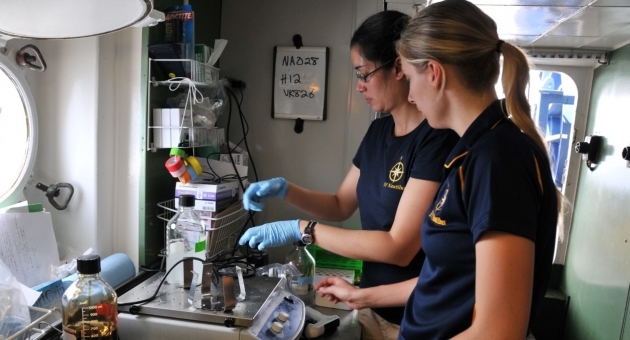
The dispersant used to remediate the 2010 Deepwater Horizon oil spill in the Gulf of Mexico is more toxic to cold-water corals than the spilled oil, according to a study conducted at Temple University. The study comes on the eve of the spill’s fifth anniversary, April 20.
Researchers from Temple and the Pennsylvania State University exposed three cold-water coral species from the Gulf to various concentrations of the dispersant and to oil from the Deepwater Horizon well. They found that the dispersant is toxic to the corals at lower concentrations than the oil.
Their findings, “Response of Deep-Water Corals to Oil and Chemical Dispersant Exposure,” were published online in the journal Deep-Sea Research II.
Approximately 5 million barrels, or 795 million liters, of crude oil escaped from the Deepwater Horizon well in 2010, and nearly 7 million liters of dispersants—chemical emulsifiers used to break down the oil—were used to clean it up. The spill marked the first time that dispersants were applied beneath the surface at the source of an oil spill.
“Applying the dispersants at depth was a grand experiment being conducted in real time,” said Erik Cordes, associate professor of biology at Temple, who studies Gulf of Mexico coral communities. “It was a desire to immediately do something about the oil coming out of the well, but they really didn’t know what was going to happen as a result.”
Following the 2010 spill, Cordes and his collaborators discovered several damaged Gulf coral populations coated with a dark-colored slime that was found to contain oil from the spill and residues from the dispersants.
“We know that the corals in the Gulf were exposed to all of these different combinations of dispersants and oil, so we have been trying to determine the toxicity of the oil and the dispersants, and see what their impact would be on the corals,” said Danielle DeLeo, a Temple doctoral student in Cordes’ lab, who was the study’s lead author.
The researchers were surprised to find that the lethal concentration is much lower for the dispersant, meaning it is more toxic than the oil. “It doesn’t take as much dispersant to kill a coral as it does oil,” Cordes said, adding that the oil in combination with the dispersant increases the oil’s toxicity.
Cordes’ lab will be carrying out additional studies to try to replicate the concentrations of oil and dispersant that the corals were exposed to during the Gulf oil spill, but this is the first step in determining the toxic levels of dispersants and their impact on the environment. He said their findings could assist in developing future strategies for applying dispersants at oil spills that may be more helpful than harmful to the environment.
In addition to Cordes and DeLeo, the researchers included Iliana Baums and Dannise Ruiz-Ramos of Penn State. The study was funded by a grant from the Gulf of Mexico Research Initiative to the Ecosystem Impacts of Oil and Gas Inputs to the Gulf consortium.